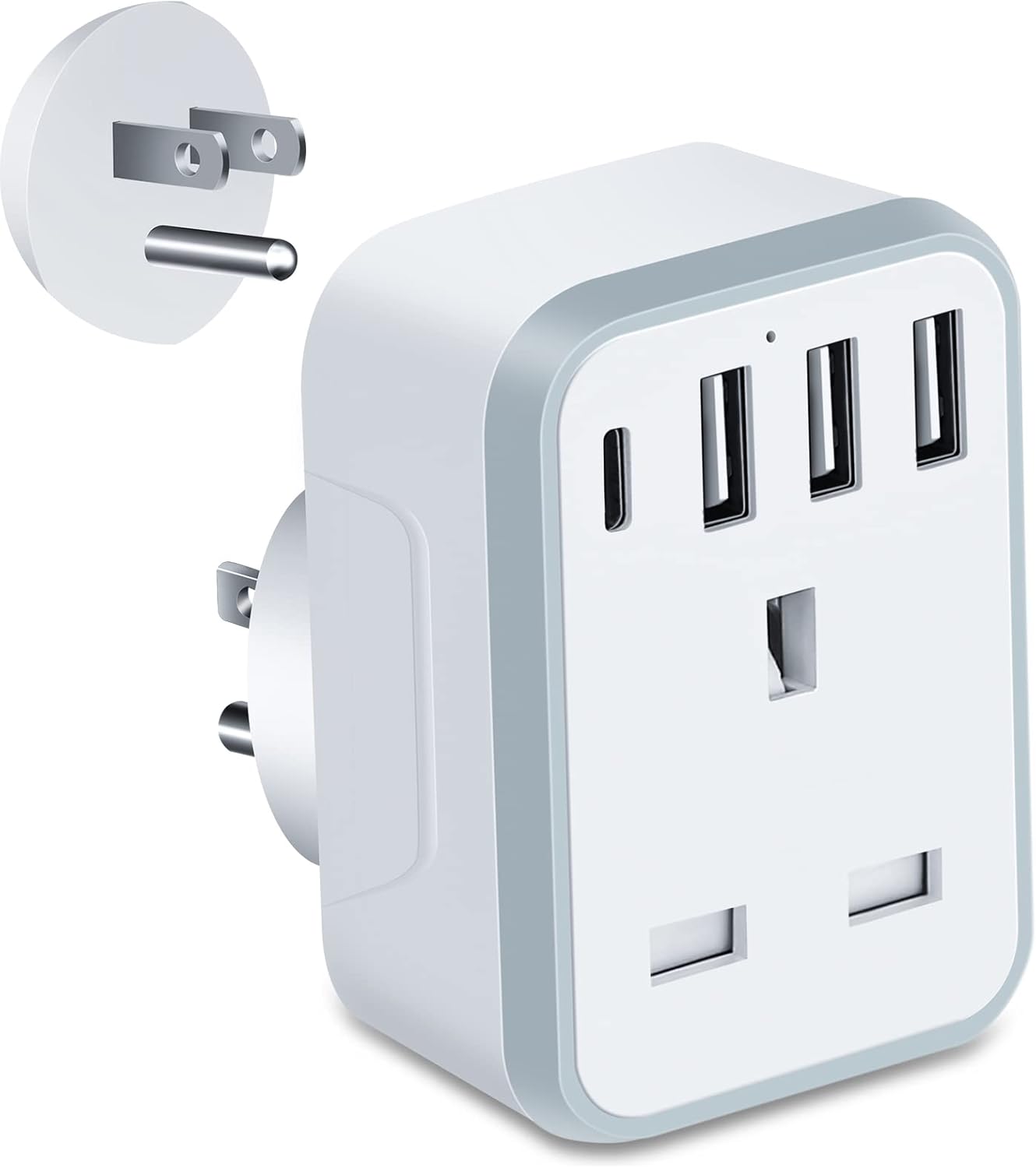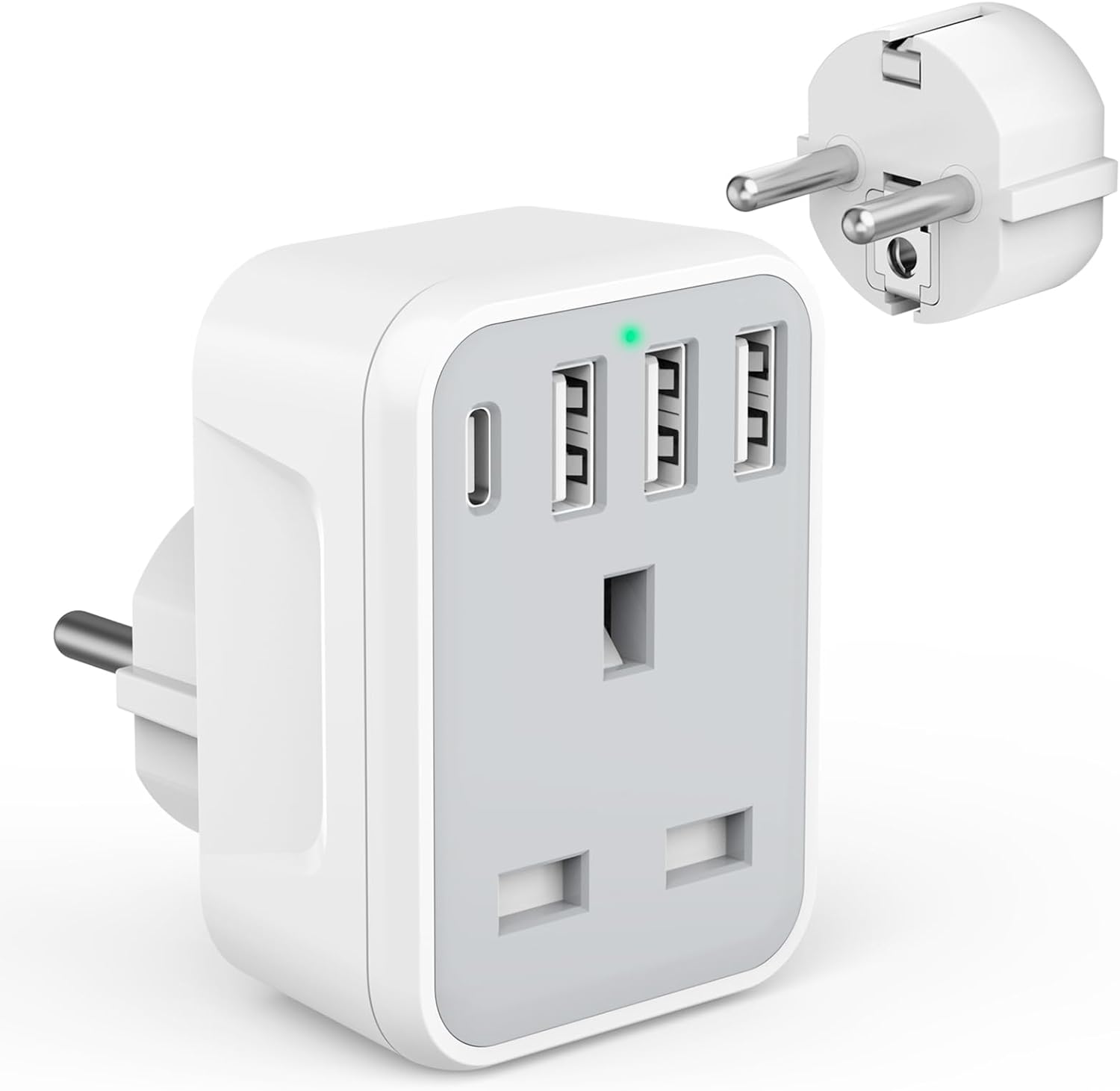A India Guide to Electricity for Tourists
India, a land of vibrant culture and breathtaking landscapes, beckons travelers from across the globe. As you prepare for your journey, one practical consideration often arises: how will you power your essential electronic devices? Understanding the local electrical system is key to ensuring a smooth and safe experience, allowing you to stay connected and capture every memorable moment without any unexpected power outages or device malfunctions. This guide will illuminate the essentials of India’s electrical standards, covering everything from voltage and frequency to plug types and the need for adapters or converters.
The Standard Voltage and Frequency in India
For tourists planning their trip, it is essential to know that India operates on a standard supply voltage of 230V with a frequency of 50Hz 1. This standard is common in many parts of the world, including Europe, Australia, and the United Kingdom 4. However, it differs significantly from the 110-120V and 60Hz system prevalent in the United States, Canada, and some South American countries 4. The consistency of this information across numerous sources underscores its reliability for travel planning 1.
The selection of 50Hz as the standard frequency in India has historical roots in the early days of its electrical infrastructure, which was influenced by the British electrical network 6. While a transition to the 60Hz standard used in some other parts of the world might seem like a possibility, the sheer scale and complexity of India’s existing power network make such a change exceptionally challenging and financially prohibitive 7.
It’s worth noting that while the nominal standard is 230V, the Indian Standard IS12360 specifies an acceptable voltage range for single-phase supply between 207V and 253V 8. This tolerance acknowledges that real-world electrical supplies can experience minor fluctuations. Most modern electronic devices are designed to accommodate such variations, but it’s a factor to be aware of.
Understanding Plug Types in India
Beyond voltage and frequency, the physical interface between your devices and the power outlet is crucial. In India, tourists will encounter three primary plug types: Type C, Type D, and Type M 1.
Type C plugs are characterized by two round, parallel pins 1. This type is also known as the “Euro” plug and is compatible with sockets designed for plug types E and F 3. Travelers from Europe might find that some of their smaller electronic devices already use this plug type.
Type D plugs feature three round pins arranged in a triangular pattern 1. This plug type is predominantly used in India, as well as in countries like Sri Lanka and Nepal, and certain parts of Africa 3.
Type M plugs also have three round pins in a triangular configuration, but these pins are notably larger and thicker than those of Type D 1. While visually similar to Type D, Type M plugs are not compatible with Type D sockets, and vice versa 11. Type M plugs are often used for appliances that draw more power 12.
Given the presence of these three distinct plug types, tourists should be prepared to encounter any of them during their travels within India. Ideally, having a universal travel adapter ensures compatibility regardless of the specific outlet encountered.
Do You Need a Voltage Converter?
The necessity of a voltage converter hinges on the voltage rating of your electronic devices compared to India’s 230V standard 1. A crucial first step is to always check the label on your appliance or its power adapter.
If your device clearly states “INPUT: 100-240V,” it is a dual voltage appliance 1. Such devices are designed to operate safely across a wide range of voltages, including India’s 230V supply. For these devices, you will only need a plug adapter to physically fit the Indian sockets 1. Many modern electronics like smartphone chargers, laptops, and cameras fall into this category 9.
However, if your appliance is labeled with a single voltage, such as 110-120V (common in the US) or 230V, you need to pay closer attention. If your device is rated for 230V only (as is the case with many appliances purchased in the UK and Europe), you will also likely only need a plug adapter, as the voltage is already compatible 1.
The critical scenario requiring a voltage converter is when your appliance is designed for a voltage different from 230V, for instance, a 110-120V device from the United States 1. Plugging a 110V-only appliance directly into a 230V outlet can cause it to overheat, potentially leading to damage or even fire 4. In such cases, a step-down voltage converter is essential to reduce the 230V supply to the required 110-120V.
| Appliance Voltage Rating | Indian Voltage (230V) | Action Required |
| 100-127V | 230V | Requires Voltage Converter (Step-Down) and Plug Adapter |
| 220-240V | 230V | Plug Adapter Needed (Check Frequency) |
| 100-240V (Dual Voltage) | 230V | Plug Adapter Needed |
Do You Need a Plug Adapter?
Regardless of voltage compatibility, a plug adapter is almost certainly necessary for tourists traveling to India 9. The plug types used in India (C, D, and M) are different from those found in many other parts of the world. For example, US plugs (Types A and B) will not fit into Indian sockets 10, and UK plugs (Type G) also require an adapter 11.
A simple plug adapter does not change the voltage; it merely allows you to physically connect your device to the outlet. For travelers who will be using devices with different plug types or who travel frequently, a universal travel adapter can be a convenient solution 9. It is generally advisable to purchase a travel adapter before your trip to avoid the hassle of searching for one upon arrival 9.
Frequency Considerations
While voltage compatibility is the primary concern for most electronic devices, the difference in electrical frequency can also have implications for certain appliances. India operates at 50Hz, while some countries, like the United States, use 60Hz 1.
A difference in frequency can affect the operation of appliances with motors or timers. For instance, a clock designed for 60Hz might run slightly slower on a 50Hz supply, and vice versa 1. Generally, it is not recommended to use appliances if the frequency differs significantly 3. However, if the voltage is compatible, using an appliance for a short period at a different frequency might be possible at your own discretion 3. It is particularly important to exercise caution with devices that involve movement, rotation, or precise timing, such as electric shavers or fan heaters 3.
Many modern electronic devices, particularly those with power adapters like laptops and phone chargers, are designed to handle both 50Hz and 60Hz frequencies 7. Checking the label on your device will usually indicate the supported frequency range. Some voltage converters also have the ability to change the frequency, which might be a consideration for more sensitive equipment 10.
Tips for Using Electronics Safely in India
To ensure the safe use of your electronics during your trip to India, keep the following tips in mind:
- Always check the label on your appliances and their power adapters to confirm the voltage and frequency compatibility 3. This is the most crucial step in preventing damage to your devices.
- Avoid overloading outlets or adapters 11. Plugging too many devices into a single outlet can lead to overheating and potential hazards.
- Consider using a surge protector, especially if you are concerned about potential voltage fluctuations in the electrical supply 13. While the nominal voltage is 230V, variations can occur.
- Unplug devices when they are not in use 11. This not only saves energy but also reduces the risk of electrical issues when you are away or asleep.
- Exercise extra caution with high-power appliances like hair dryers, curling irons, and travel kettles 9. If you are unsure about their voltage compatibility, it is best not to use them or to use an appropriate voltage converter.
- Ensure that any plug adapters you use are rated for the voltage in India (230V) 13.
- Be aware that some travel adapters may not be suitable for appliances that require an earth connection 1. Double-insulated equipment will typically be marked with a specific symbol indicating that it does not require an earth connection.
Conclusion
Traveling to India with your electronic devices is certainly manageable with a little preparation. The standard voltage in India is 230V at a frequency of 50Hz. Depending on the voltage rating of your appliances and the plug types they use, you will likely need a plug adapter, and in some cases, a voltage converter. Always prioritize safety by checking the labels on your devices and using the appropriate adapters and converters. With these considerations in mind, you can confidently power up your Indian adventure and stay connected throughout your incredible journey.







